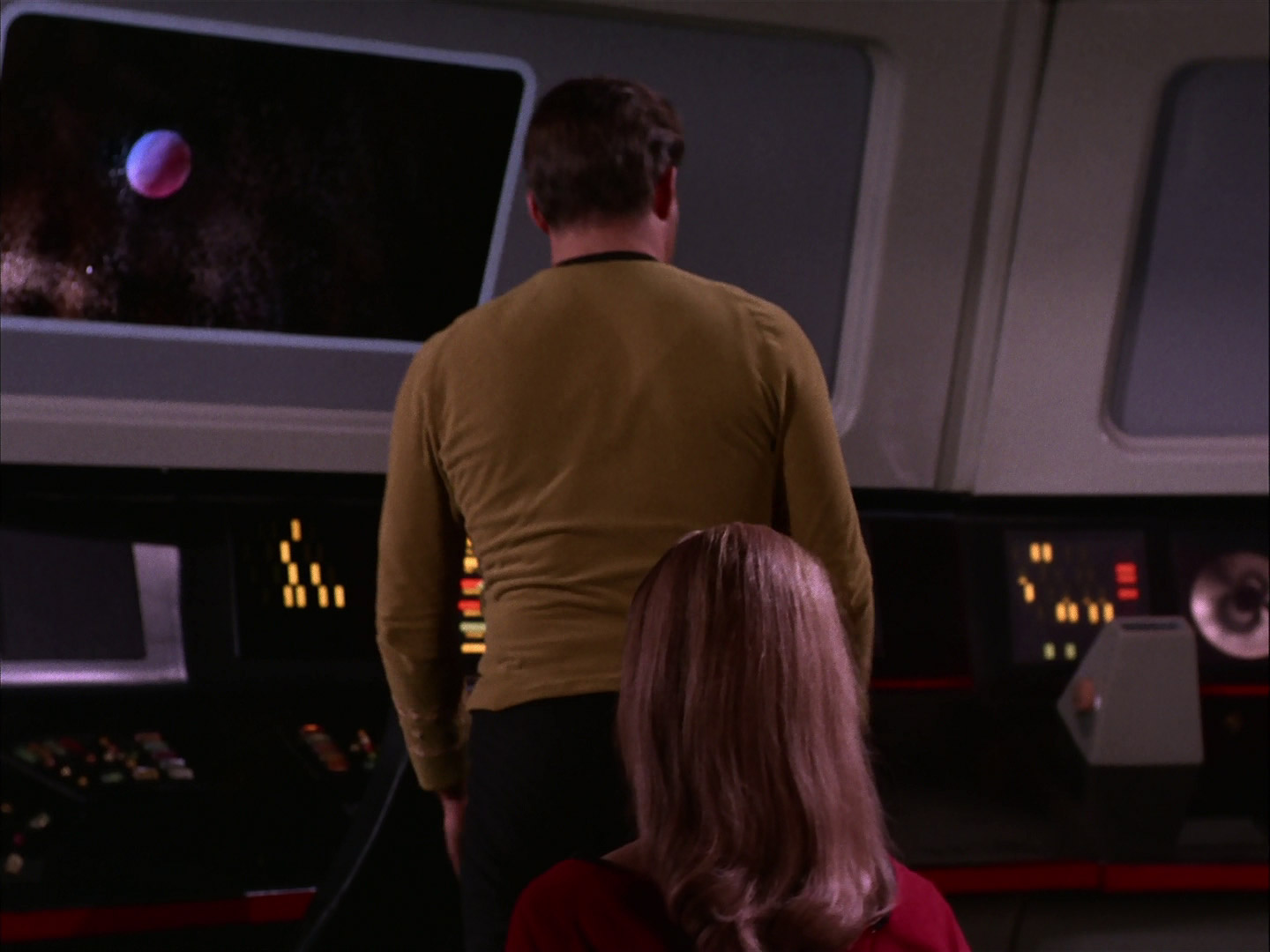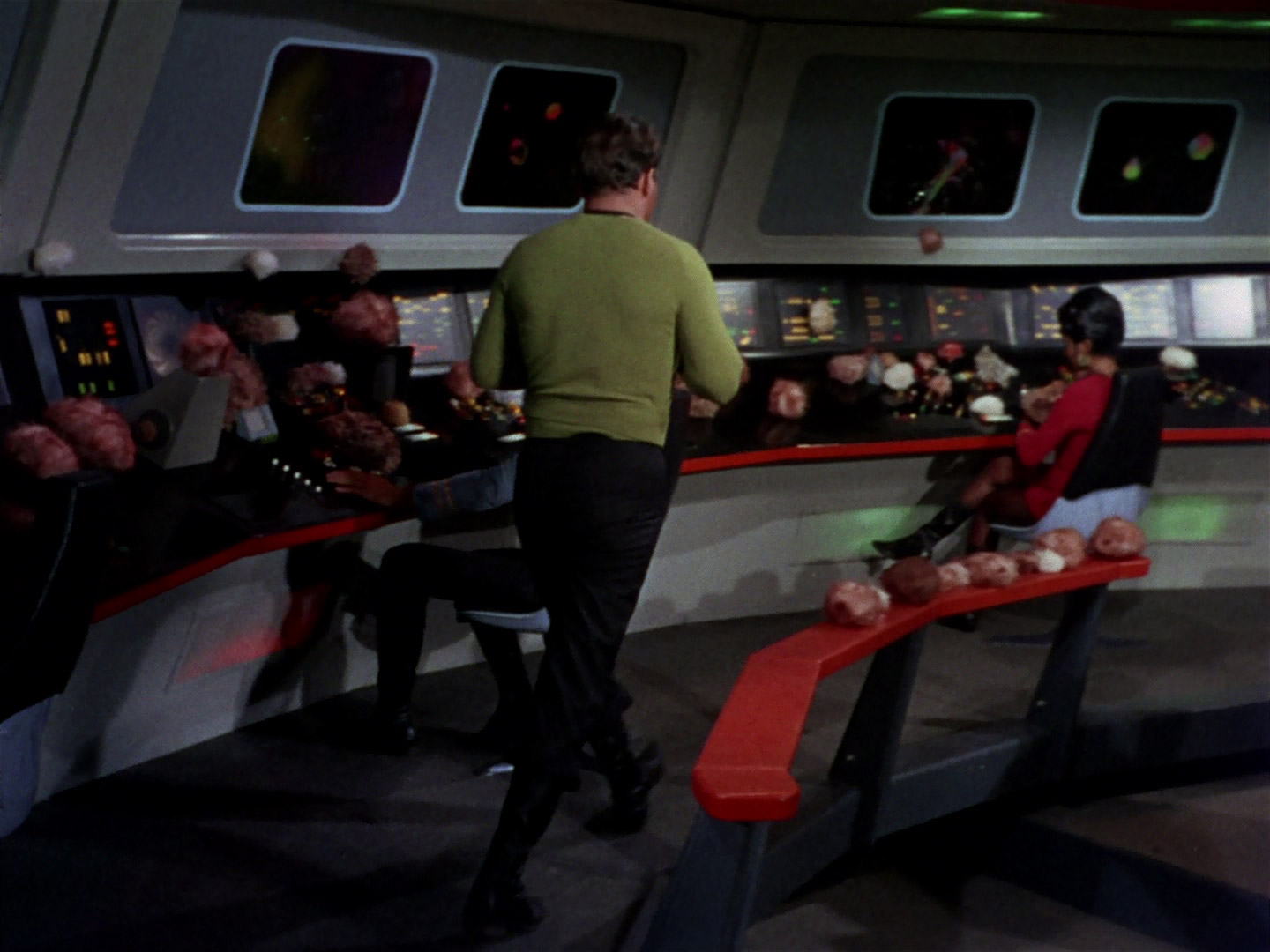I still think the Excelsior should be a bit larger, but that’s me.
Everything I ever read, said it was twice the size of a Connie.
I still think the Excelsior should be a bit larger, but that’s me.
HereDoes anyone have the illustration from "The Making of Star Trek" that shows the outline of the Enterprise superimposed over the silhouette of an aircraft carrier?
Your post got cut off after "trick of" but I think I get your jist. However, the view in TAS off in several ways.Here
TAS bridge
Is the bridge at a funny angle?
Now I'm not too sure how accurate that bridge layout graphic is. If you look at the second turbolift exit, it's a duplicate of the turbolift alcove between communications and engineering and wider than the half-segment given here. It would have to be the half-station width and just a trick of...www.trekbbs.com


I still think the Excelsior should be a bit larger, but that’s me.
Yeah, I'd agree with that. A 600m Excelsior would look great.
The Excelsior has a tiny saucer section compared to the rest.
What fools they were!and they assumed we'd never be looking at it 30 years later.
There was a spare opening next to Spock's console






Yep, that retractable Navigation console certainly a neat feature!Now you see it (the potential opening);
now you don't.

@Mytran, what episode are those screencaps from?
I notice in the lower left corner of the first photo a piece of wood, with splashes of paint on it, can be seen attached to the floor/stage. I want to see if I can spot that piece of wood the next time I watch that episode.
I also noticed that Spock's scope appear to be a different color from one screencap compared to the other screencap.


Nimoy must have had a stage trick, such that he wasn't looking directly at the light bulb but it looked like he was.^ Thanks for that info.
I have wondered what exactly did Nimoy see when he looked into that scope.
It was clearly lit in the inside. Was Nimoy looking at some light bulbs? I assume it was a soft glow recessed type of lighting; otherwise, a direct shining of light would have been uncomfortable or damaging to Nimoy's eyes when steered into it.

That is fascinating work that you did. Glad there wasn't any permanent damage to your eyesight. Thanks for sharing that info.Nimoy must have had a stage trick, such that he wasn't looking directly at the light bulb but it looked like he was.
Along with the ergonomic problem of bending over a hooded viewer, if the data was always bright blue, then standing watch after watch would mess up his eyes.
As a young man, I worked at a micrographics company. We took in client documents and put them on microfilm. One of the cameras I operated was the Computer Output Microform (COM) system.

Microform - Wikipedia
en.wikipedia.org
I would take a client's 12-inch magnetic reel and mount it on one of those refrigerator-sized tape drives you see in old sci-fi movies. That would feed computer data to the camera machine, in which a little CRT screen would flash text pages from the tape, in bright blue letters, to expose that data onto the 105mm film as many rows of tiny pages.
But the CRT text images had to be aligned with the proper glass slide in the camera, which saved "vast" (in those days) amounts of data, because the slide contained the form that repeats on every page, like boxes and column headings.
Anyway, to align the slide, I had to look into a microscope eyepiece with my dominant eye, and adjust the slide until the microscopic alphanumeric data was positioned just right within the form. And one day I noticed that blue things in the real world were a lot less blue in my dominant eye, because the work was fatiguing that retina.
Luckily it wasn't permanent, but that hooded viewer is not doing Spock's eyesight any favors. Or his lower back.
I seem to remember Navy ships having those.Luckily it wasn't permanent, but that hooded viewer is not doing Spock's eyesight any favors. Or his lower back.

I seem to remember Navy ships having those.
If I were to do a fan bridge, it would be a CRT in there. You would look in there infrequently.
Now, look at the warmth of this display:

Not A Sewing Machine: A Multimedia Briefcase
When you think of Singer, you usually think of sewing machines, although if you are a history buff, you might remember they diversified into calculators, flight simulation, and a few other odd busi…hackaday.com
THAT should be the tiny screen in front of Spock that has no hood.
You don't own a lawn. The lawn owns you. Blessed is the lawn. "All hail the Ori."If only the neighbor's damn kids knew property recognition. Stay off my lawn!!

We use essential cookies to make this site work, and optional cookies to enhance your experience.
